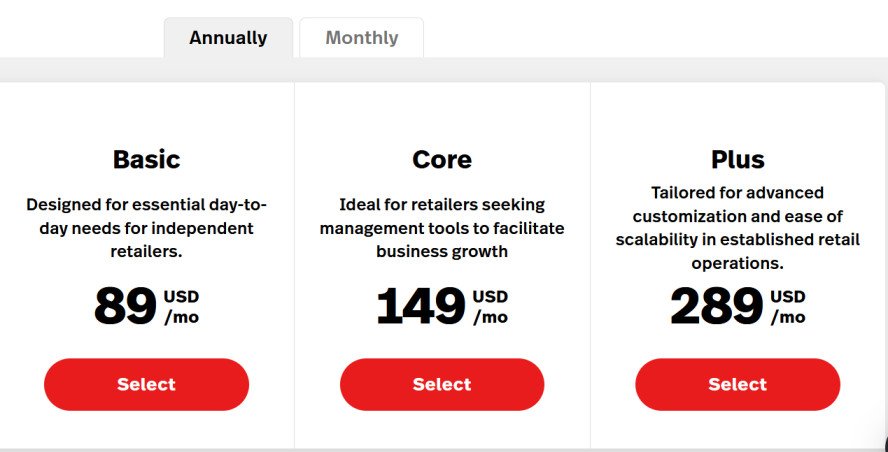The right Point of Sale (POS) system can optimize a restaurant’s operations and alter the customer journey. Now, whether starting a new cafe or modernizing an existing chain, a effective POS system isn’t a choice, but an indispensable requirement. This guide will tailor the best restaurant POS systems in 2025 with a thorough examination of their advantages, disadvantages, and essential features to make the best decision for your business.
What is a Restaurant POS System?
POS or Point of Sale systems for restaurants refer to the blend of hardware and software used for tracking sales, inventory, employees, and servicing customers. The modern world requires ease of use, thus, most POS systems are cloud-based and designed to work in conjunction with allied digital systems like accounting and customer loyalty programs.
Key Functions of a Restaurant POS System:
Order management Payment Processing Inventory tracking Table and reservation management Staff Scheduling and clock-ins Reporting Analytics
Top Restaurant POS Systems in 2025
The restaurant industry is currently undergoing a revolution with technology-driven POS systems that cater to businesses ranging in size and type.
1. Toast POS

Best for: Full-service restaurants and multi-location businesses
Overview: With Toast POS, the restaurant/home industry is given 447 functions per productivity Toast POS features extensive inventory management, online ordering, and payroll integration, as well as precise hardware customization.
Key features:
- User-friendly cloud interface
- Built-in online ordering and delivery tracking
- Reporting and analytics
- Employee management and payroll
Pros:
- Excellent customer service
- Specialized features for restaurants
- Open for new and growing businesses
Cons:
- All hardware is purchased through Toast.
- Monthly subscription cost above competitor.
Pricing:

2. Square for Restaurants

Best for: Specialized catering for small and medium-sized restaurants, fast-service establishments.
Overview: Square is common for easy-of-use and low pricing of its services. Especially helpful for hospitality businesses is the fast-paced restaurants menu included in the restaurant-specific division.
Key features:
- Fast set up using an iOS device
- No extended contracts
- Integrated payment and tipping
- Real-time sales reporting
Pros:
- Free Basic service for small teams
- Attractive rates
- Straightforward user interface
Cons:
- Basic Advanced Inventory system.
- Less sophisticated hardware options.
Pricing:

3. Lightspeed Restaurant

Best for: High-volume and fine dining restaurants
Overview: Bigger operations have more complex business needs for robust inventory management and sophisticated reporting. These are provided by the uncompromised customization offered by Lightspeed.
Key Features:
- Enhanced management of inventory.
- Supervision of menus and ingredients.
- Synchronization with accounting and CRM systems.
- Dissimilar meticulous reporting dashboards.
Pros:
- Extremely flexible.
- Outstanding for intricate cuisines.
- Grows along with evolving businesses.
Cons:
- Beginners may take some time to get acclimatized.
- Higher in price than multiple other options.
Pricing:

4. TouchBistro

Best for: Standalone bars and restaurants.
Overview: TouchBistro is an iPad-centric POS system that is extremely useful in environments where convenience and mobility are priorities. Includes tableside ordering and splitting bills into different purchases as part of its suite of offerings.
Key Features:
- Ordering at the table.
- Administrating the menu.
- Staff scheduling and access hierarchy.
- Reporting within the app.
Pros:
- Tailored directly towards eateries.
- Simple to instruct personnel.
- Possibility of working offline.
Cons:
- Reporting capabilities are somewhat limited.
- Some advanced features are not included in the basic pricing.
Pricing:

5. Revel Systems

Best for: Restaurants and franchises at the enterprise level.
Overview: Revel has an advanced POS and its systen comes with cloud payment services. With enterprise level offers its products are ideal for sophisticated business models and multiunit operations.
Key Features:
- Inventory management and labor control in real time.
- Dashboards that can be individualized.
- Numerous API integrations.
Pros:
- Tailored for scaling.
- Unrestricted benefits.
- Powerful features.
- Support and training services offered are good.
Cons:
- Time consumption during setup is high.
Pricing:

Choosing the Correct POS System
Let’s take a look through the lens of POS strategy considerations:
- Type And Size Of The Restaurant
Different types of restaurants, for example: fine dining as well as quick service, have distinct needs. Outline your primary requirements as well.
- Costs
Check if there is a balance between initial spendings, monthly payments, long term returns, and free options that often will lack features posing to be valuable.
- Simplicity
Your team’s productivity hinges on training time, so endeavor to select an intuitive system. Taking training time as a key differentiator, ensure to put attention on ease of navigation for team members on the system.
- Customer Service
Check if the vendor provides around the clock assistance in case you run your business outside normal hours.
- Customization Options Alongside Other Apps
Make sure the system is adaptable and can connect with other software. Focus on features such as: accounting, delivery, and other systems that might be useful on the operations.
Frequently Asked Questions
What is the best POS system for small restaurants?
Square for Restaurants is highly recommended for small businesses as a result of it being cost efficient and user friendly.
Are cloud based POS systems superior?
Without a doubt cloud based systems allow you to remotely access data, improve frequency of updates, and amplify the security of information reserves immense benefits over non cloud based systems.
Can a POS system help with employee management?
Without a doubt. Current day systems offer sophisticated solutions—including, but not limited to: time management, scheduling, and payroll management integration functionalities.
What is the price of a restaurant’s POS system?
Costs vary from free basic versions to over $200 per month, depending on features and hardware requirements.
Is it possible for a POS system to function offline?
Revel and TouchBistro are examples of systems that contain offline modes for service continuity.
Conclusion
An excellent POS system should help schedule and manage business operations. In addition to capturing sales and payments, a POS may increase customer satisfaction, and operational efficiency, and provide useful business metrics. A small-sized cafe or an operation running as a franchise will surely find an adequate option. Compare the business’s requirements with available market options to make a proper selection using leading providers such as Toast, Square, Lightspeed, TouchBistro, and Revel. Proper planning will ensure a competitive operational advantage for the restaurant in 2025 and after.
Read customer reviews, request demo accounts, compare their services to clearly set goals, and determine which will best fit the restaurant before landing on a final decision. The selection that will enhance profitability and operational efficiency is a good investment for the restaurant’s POS system.

